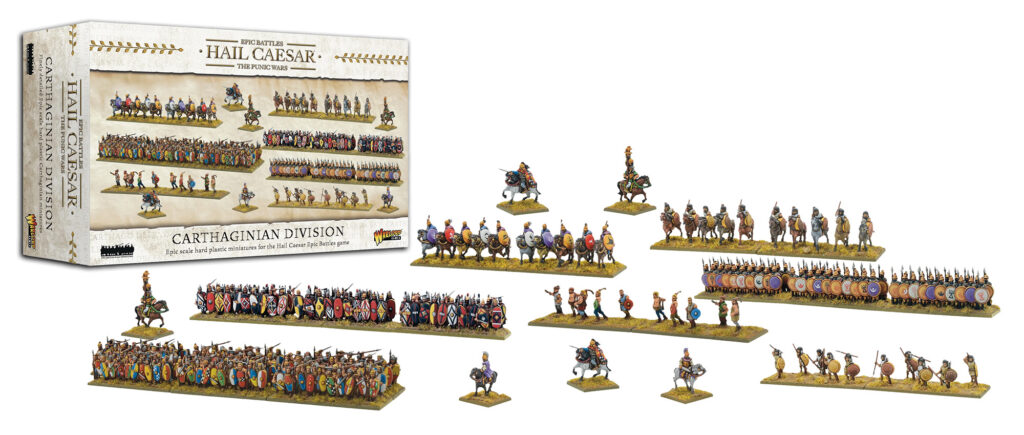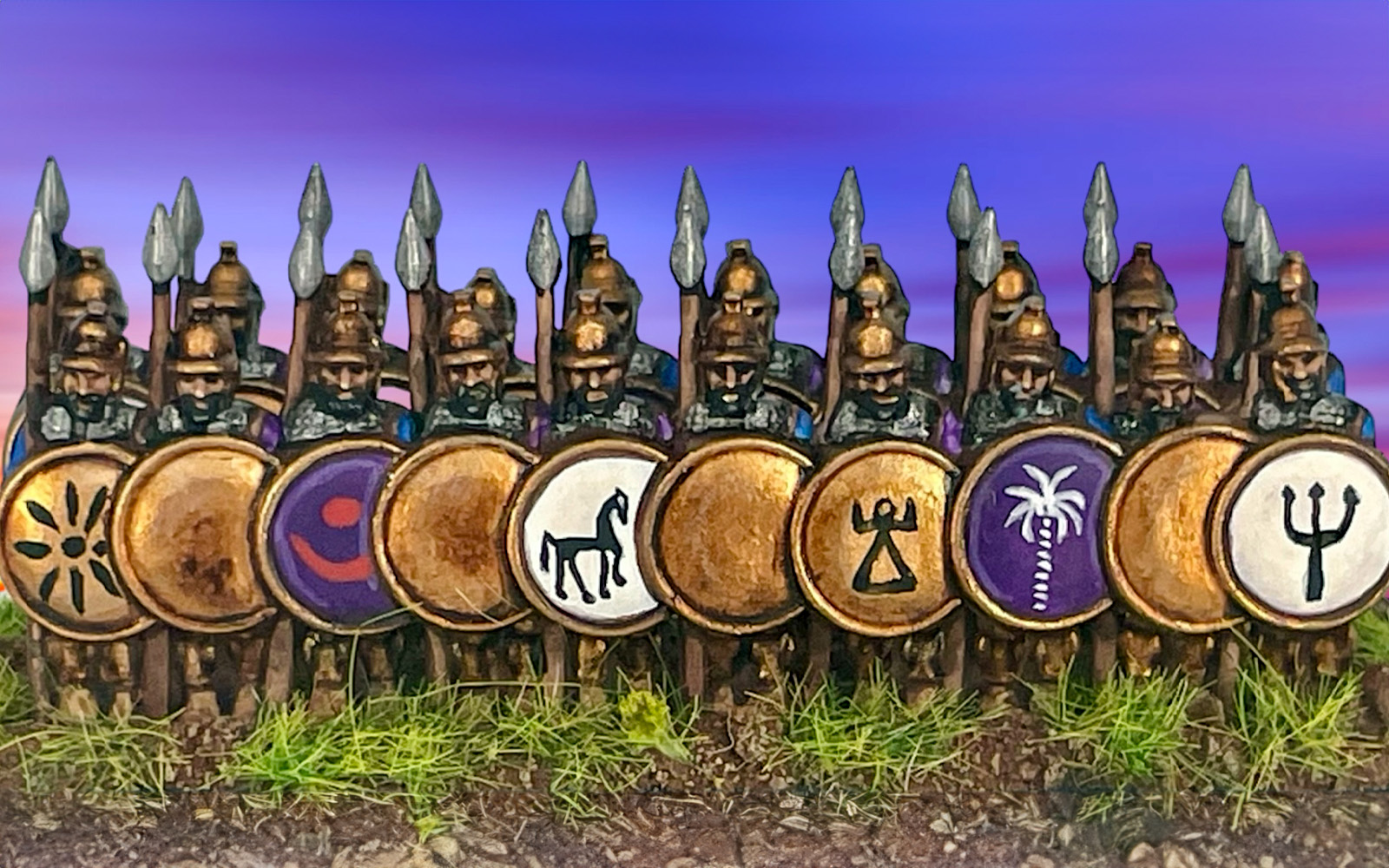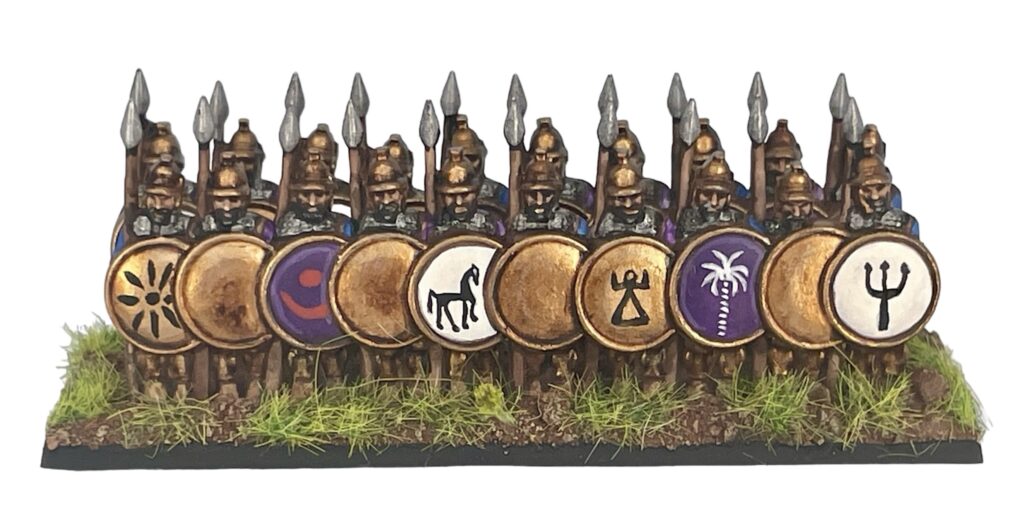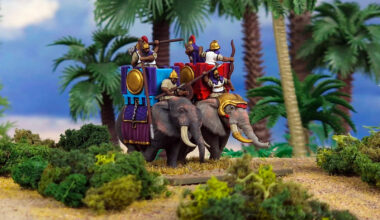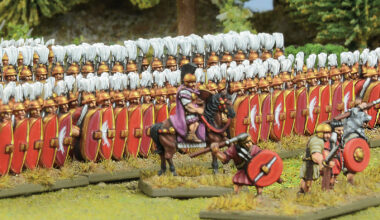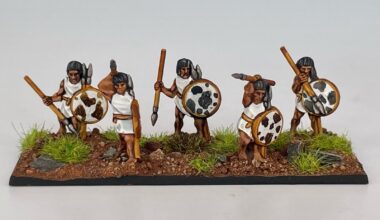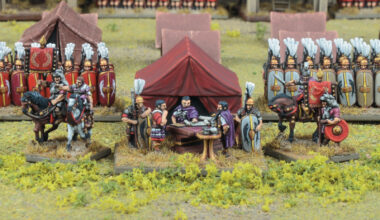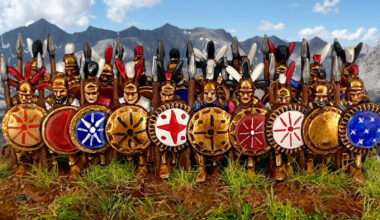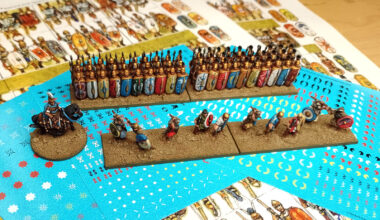Having been more than impressed by Paul Mackay’s miniatures in the past, including some truly fantastic Epic Battles regiments, we asked him if he might be interested in producing some painting guides for our latest epic release, Hail Caesar. He delivered in spades with a whole series of articles.
Previous articles in the series:
One: Numidian Skirmishers
Two: Carthaginian War Elephants
Three: Scutarii
You can also see Paul’s work in the likes of Wargames Illustrated and Wargames, Soldiers & Strategy magazines.
Paul: Libyan heavy infantry formed the backbone of the Carthaginian battle line and are equipped with chainmail, greaves (leg armour) and a hoplon-style round shield. For these models I decided to adopt a more traditional approach to painting rather than rely exclusively on just contrasts/speedpaints. I started with a white undercoat, as I like the brighter finish this brings to the other colours layered over it..
Base Colours
Shields, Bronze, Belts, Armour Trim & Spears: For all of these areas I basecoated the miniature with Vallejo MC Flat Brown. I did this for several reasons. iIt made the paint job much quicker, provided a nice base for the bronze armour and shields, and was the right base colour for belts, armour trim and wood. It also resulted in dark lines between areas of the miniature, helping distinguish them from one another.
I then painted several of the shield faces were with either Vallejo MC Off White or Citadel Xereus Purple.
Skin & Hair: I used two coats of Vallejo Xpress Tanned skin. This provided more contrast which I prefer. I also painted the beards and hair Black at this stage.
Chainmail: I thinned black paint and applied it all over the chainmail parts of the figure as well as the spear tips.
Tunics: I painted half of these with the Xereus Purple and the rest with Citadel Caledor Sky.
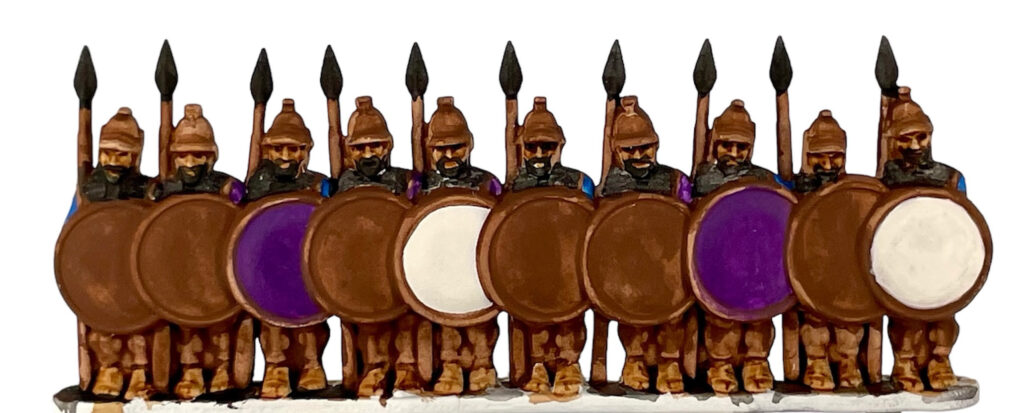
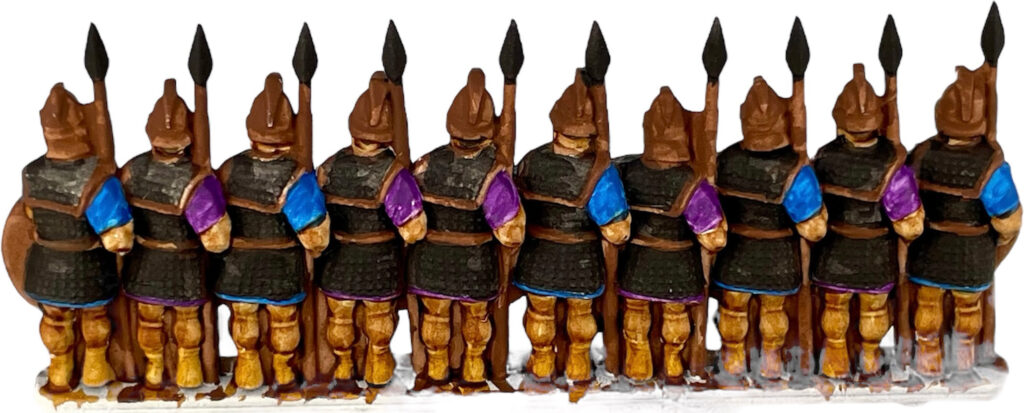
Highlights & Detailing
Note I only added any highlights to the front figures on each base and to the rear of the back facing strip. This is because any further detailing would be largely lost when the figures are ranked up. This is a tip that is generally true of all Epic Battles scale infantry stands, with the obvious exception of skirmishers.
Skin and Beards: I highlighted the skin with Citadel Cadian Fleshtone and the beards with Administratum Grey.
Tunics: These are mainly visible on the rear of the figures, I highlighted them with either Citadel Calgar Blue or Genestealer Purple depending on the base colour. I also added a shading stage on the purple cloth using Citadel Phoenician Purple. This is a very aptly named colour for these warriors as Carthage was founded by Tyre, a Phoenician city. I then added a thin, dark line using Citadel Rhinox Hide where the arm meets the tunics. At this stage I applied a coat of Vallejo Matt Acrylic Varnish before I painted the metallics. If you do it afterwards it will seriously affect the finish.
Armour and Weapons: I painted the shields; shield edges, helmets and greaves with Vallejo GC Bright Bronze. I then applied a wash with Liquitex Transparent Burnt Umber Ink and added a few highlights with the original armour colour. I then free-handed Carthaginian symbols onto some of the shields.
Spear Tips and Chainmail: I painted these with Army Painter Plate Mail. I washed the chainmail with thinned Liquitex Carbon Black Ink and then carefully highlighted with Citadel Stormhost Silver. I recommend an overbrush technique for this. This is similar to dry brushing but the paint is applied with the side of the brush with only a small amount of paint on the bristles. I also used this colour for the spear tips.
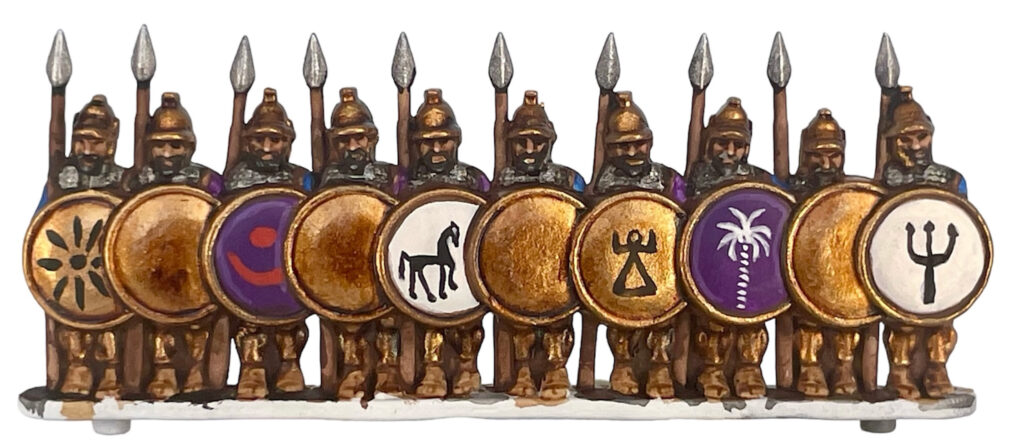
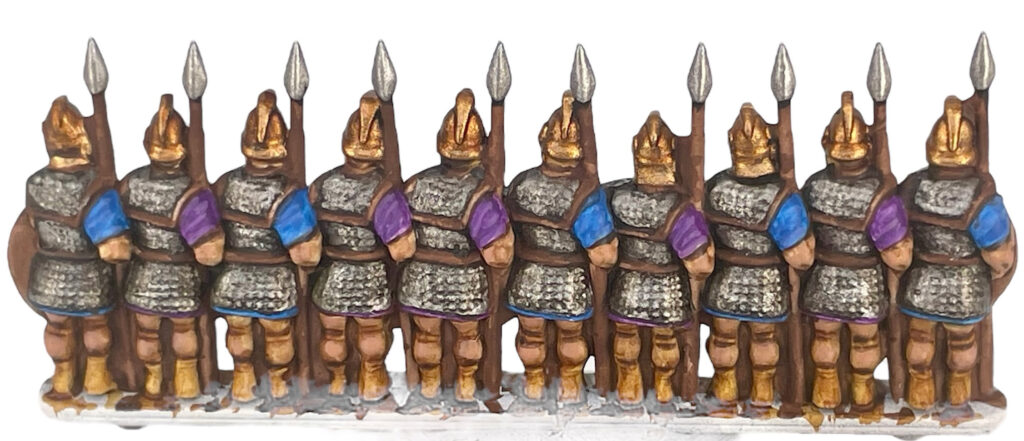
Final Thoughts
Whether you decide to do any of the extra detail steps or not, when ranked up, these figures will do any Carthaginian general proud as they stand in the centre of their line of battle.
Libyan Infantry in Hail Caesar Epic Battles
The core of the Punic army was their Libyan heavy infantry. With the benefit of Greek mercenaries hired by Carthage to support and train them, they became some of the finest heavy infantry formations in the world by the time Hannibal crossed the Alps. They fought phalanx-style, with long spears and large shields, and should be central to any Carthaginian force.
Hannibal Barca’s Carthaginian Army:
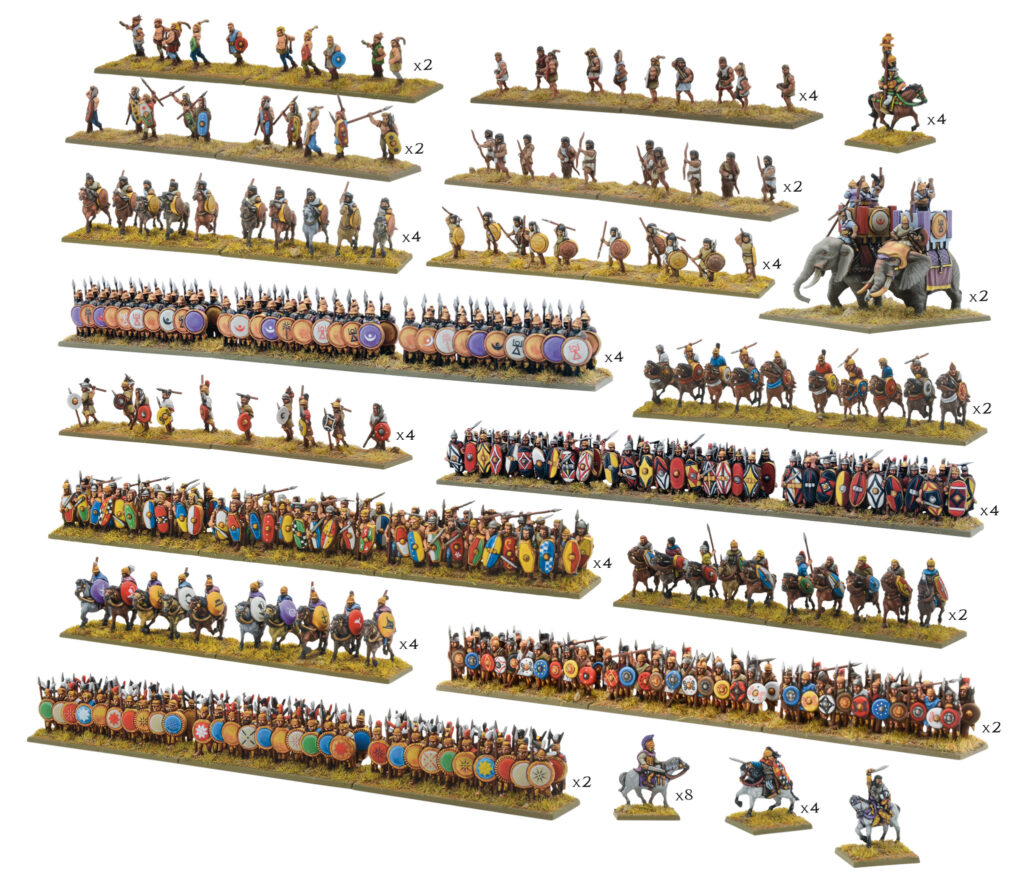
Carthaginian Division:
